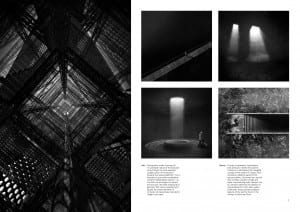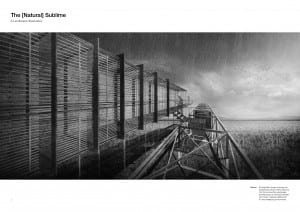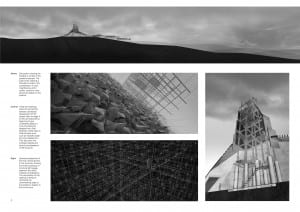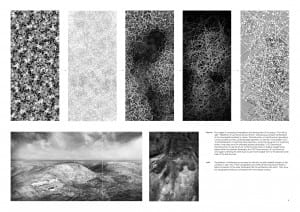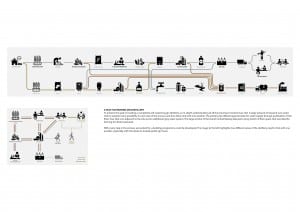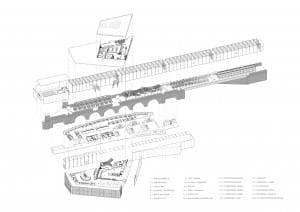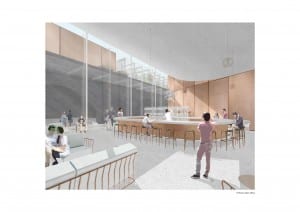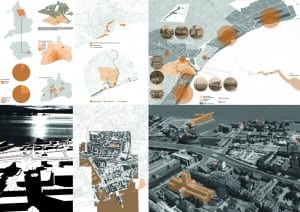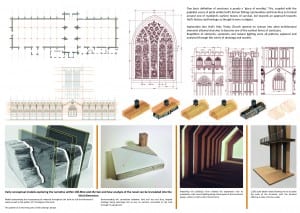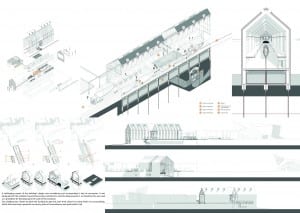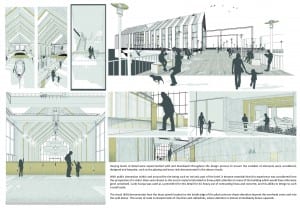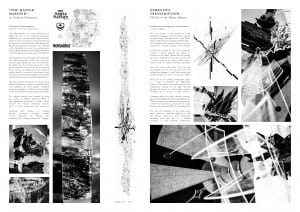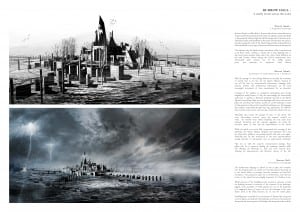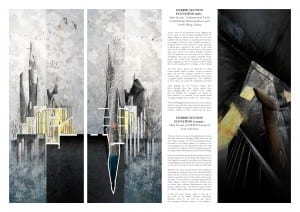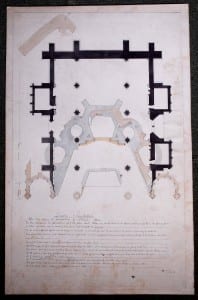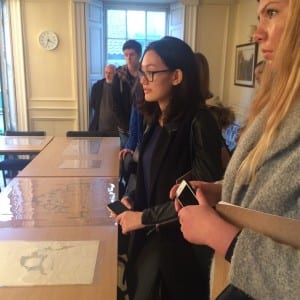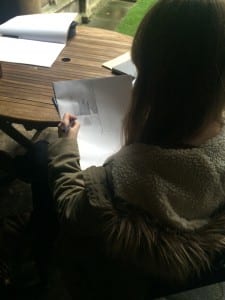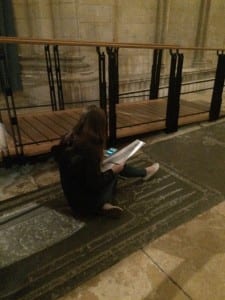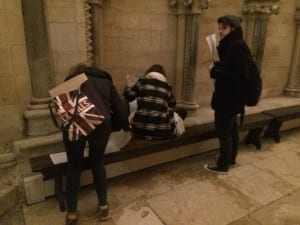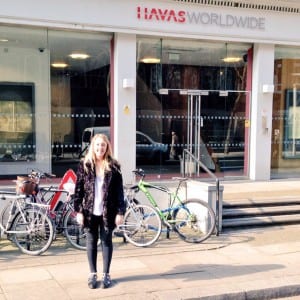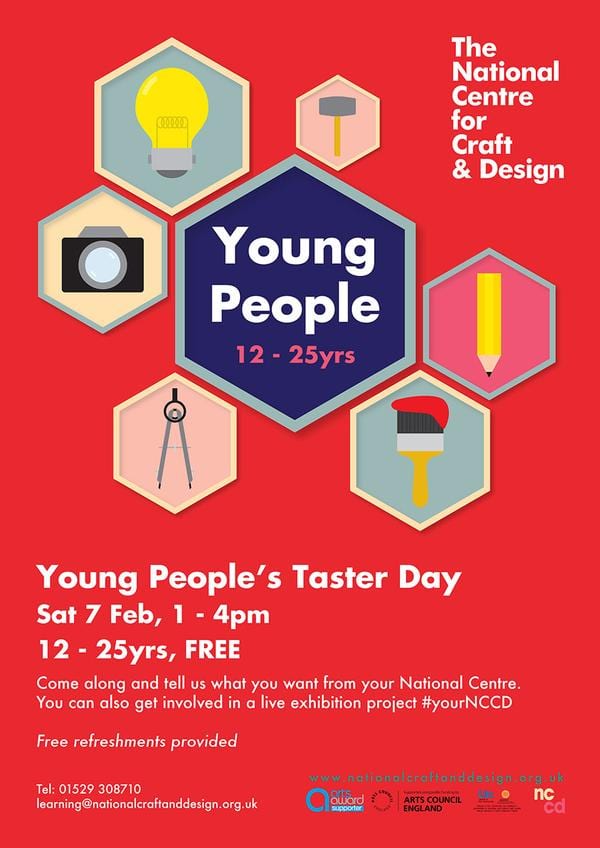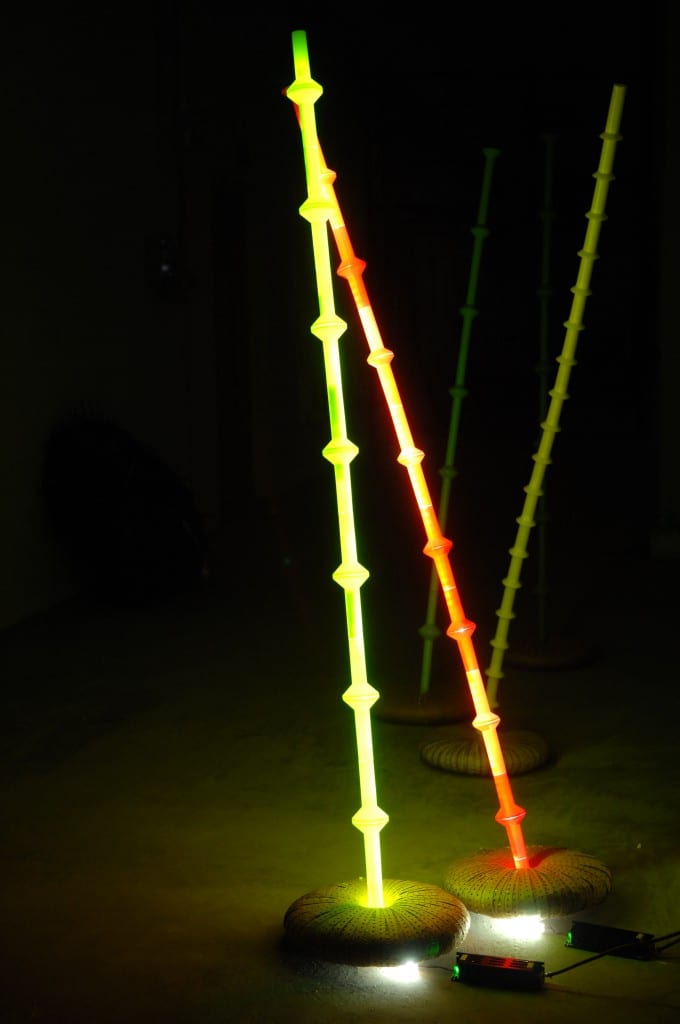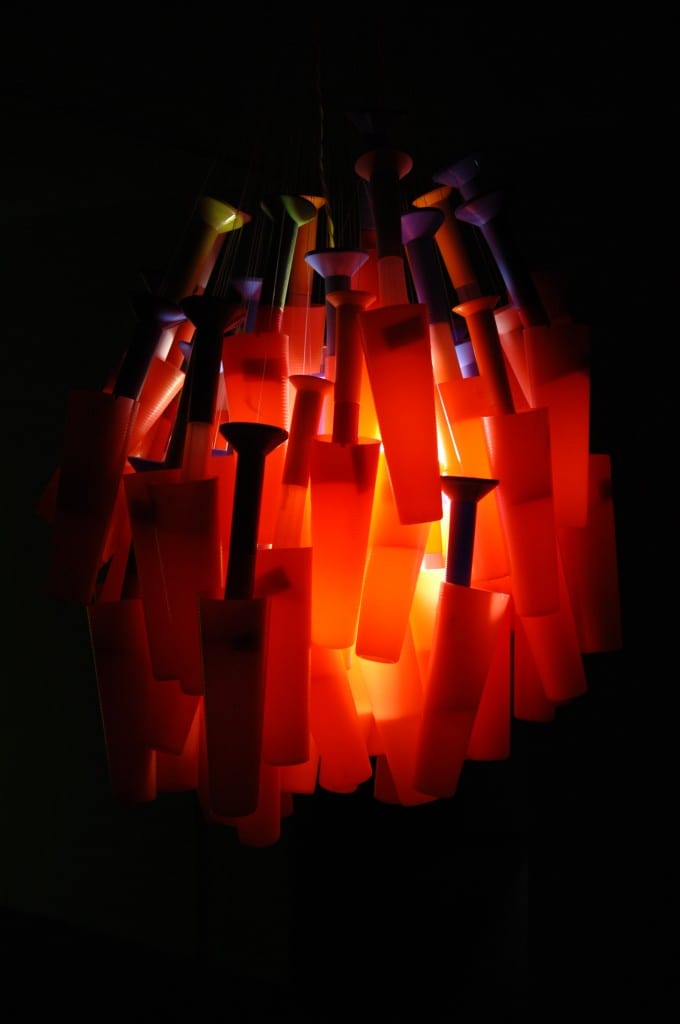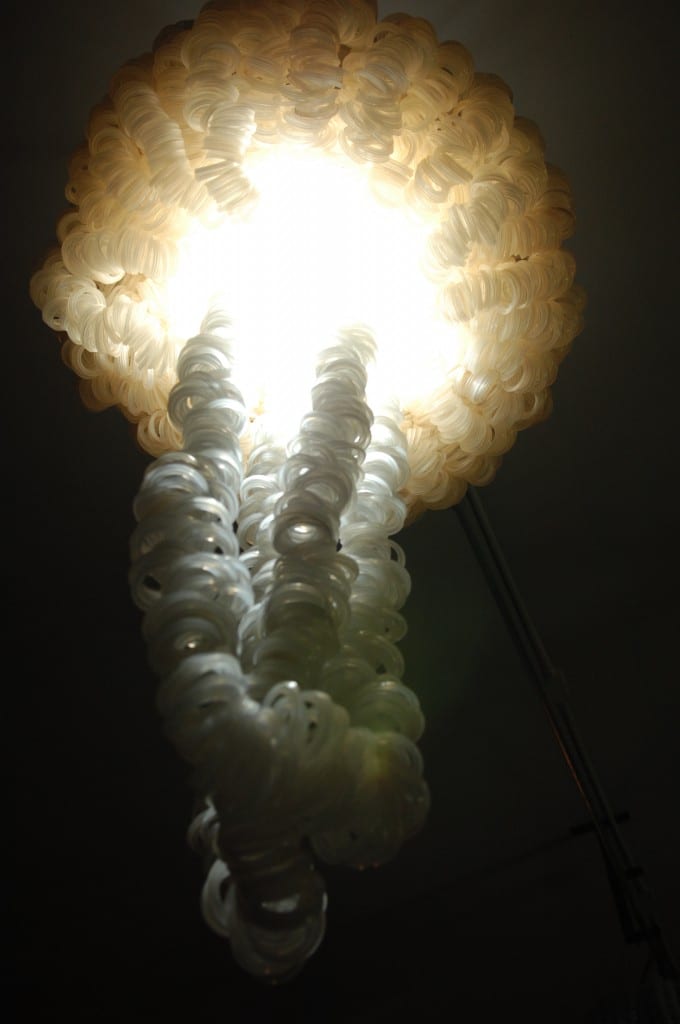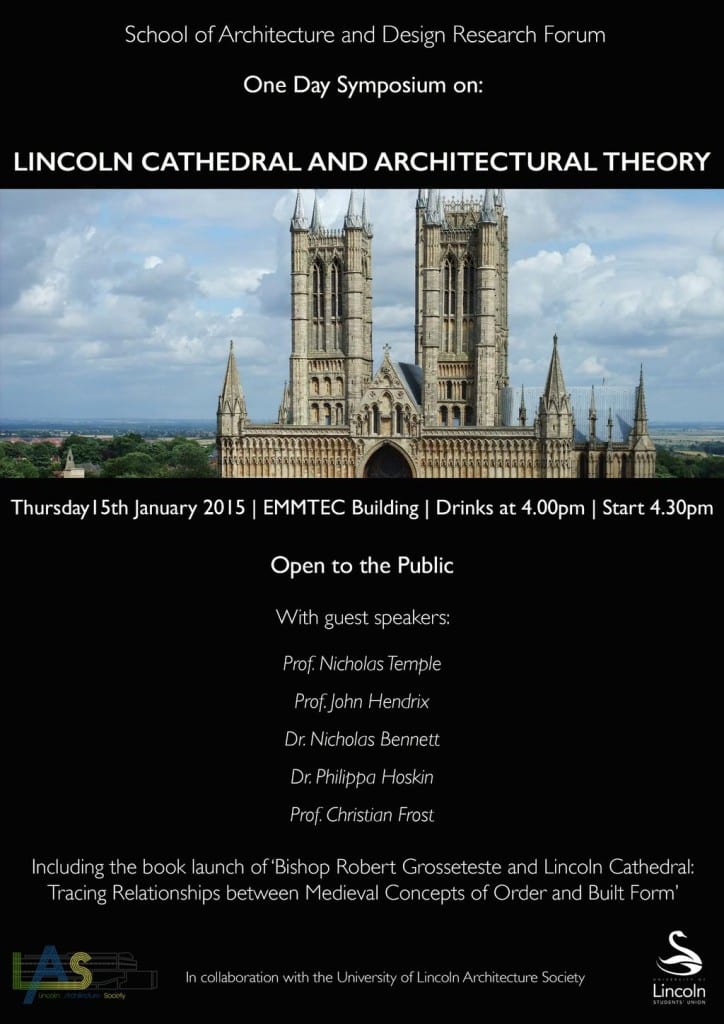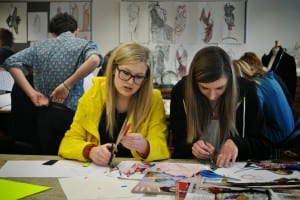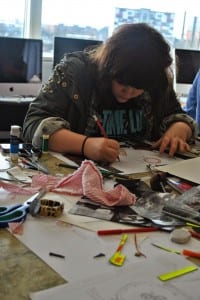Nominations for the RIBA Regional prize are here for all to see! Congratulations Jed Wellington, Isaac Timson, Harry Hutt and Joseph Istance, nominated by the LSA, the Lincoln Society of Architects.
D&AD New Blood Awards 2017
D&AD New Bloods Awards has gone live!
16 of the top brands have released creative briefs. All you need to do is find one that you like and respond! They are looking for a mixture of film, animation, graphics, illustrations, campaigns, digital installations, copywriting and more!
Some of the companies include Adobe, Amazon, BBC, John Lewis, The Army & more.
For more information got to the D&AD New Blood Website.
DEADLINE | 22 March 2017
Lets Pecha Kucha Year 1
We had an absolutely fabulous day today with year 1 architecture! Pecha kucha (quick timed presentations) on 20th century greats! Corb, Meis, Leonidov, Archigram and more! Tasty treats from Elika Nakamura – Sushi and sake, green tea and mochi! The architects of tomorrow spoke so eloquently about architectonic language, composition, political context, materiality, architectural theory, art movements and did us tutors very proud! Keep up the good work!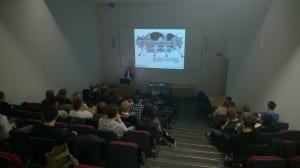
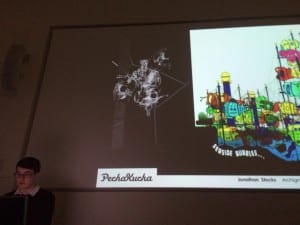
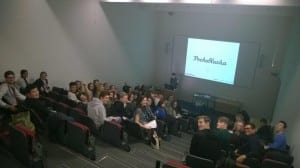
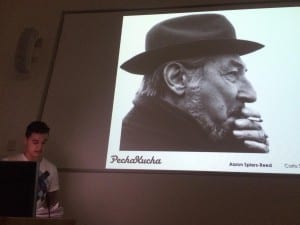
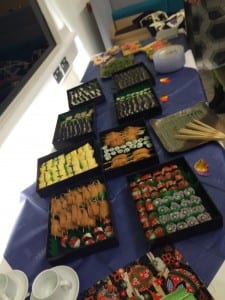
Architecture students Lincoln Cathedral visit
Year 1 Architecture students visited Lincoln Cathedral this week as part of their History and Theory studies. It was a fantastic opportunity for students to use the city as a way to understand history of architecture and gets hands on with the fabric of the city.
Students had a wonderful opportunity to view some of the original drawings of the cathedral from the 18th and 19th century, usually stored in the Wren Library. Activities included architectural tours and drawing exercises. Students are now developing portfolios of drawing studies of the cathedral and its structure.
Students excel in international upcycling project
A team of young designers has returned from a major eco-friendly event in China where they produced a collection of innovative new products from waste materials as part of a British Council ‘up-cycling’ initiative.
Up-cycling is a key focus of British Council design work, which encourages the world’s future practitioners to consider the environmental, economic and social benefits of re-using materials, rather than discarding them as waste. The University of Lincoln is one of only two UK universities selected to take part in every one of the British Council’s upcycling activities in China to date.
Students from Lincoln’s MA International Design Enterprise (MAIDE) programme, Lucia Garci Crespo and Lucy Patterson, travelled to Jiangnan University in Wuxi, China, together with Programme Leader David Bramston. The students joined fellow designers from Jiangnan University and Tongji University.
Working in teams, they were tasked with a brief centred on Taihu Lake – the main tourism area of Wuxi and a major visitor destination in China. They were invited to create new products from industry leftovers, which could be used and enjoyed in this tourism hotspot.
The Lincoln team received a number of British Council awards for their work, including ‘Best Use of Materials’, and their creations were also presented across a number of parks as part of China Low Carbon Action Day.
The University of Lincoln designers created a range of easy-to-use fishing sticks for children by converting the waste plastic strapping left over from factory packaging.
David Bramston, Principal Lecturer (Enterprise) in Lincoln’s School of Architecture & Design, explained: “We visited regions of Wuxi to meet local communities and experience the popular Li Lake, and gave our fishing sticks to local children. The very simple construction ensured that they were fast, easy and inexpensive to produce, and rather than using a hook, they simply had a knot at the end of the line to hold a piece of bread. The fishing sticks were very popular and promoted not only the benefits of using waste materials to make new works, but also created a safe new fishing experience. This project really captured the spirit of upcycling and served to prove that new designs do not have to be complicated to be effective.
“The whole visit was extremely valuable for our students. It is important for young designers to be aware of their responsibilities and understand the impact that their decisions to engage with more considered and environmentally friendly practices can have. The collaboration of cultures and experiences is also fundamental to the MAIDE studio ethos.”
The project in China was supported by the Guangzhou Low Carbon Industries Association and the Guangzhou Valuda Group Ltd, and was designed to facilitate collaboration between higher education institutions and industry partners internationally.
The MAIDE team later went on to the Hubei Institute of Fine Art in Wuhan, China, where they were joined by fellow Lincoln students and Assistant Professor Yeli, visiting scholar from the Chinese University of Mining and Technology School of Art & Design in Xuzhou, who has been based at Lincoln since August 2014.
They teamed up with Chinese Industrial Design students to create a number of novel seating solutions, again using only ‘found’ materials. The group worked with street makers – individuals on the streets of Wuhan who are able to stitch, weld and fabricate design proposals – to bring their ideas to life, before exhibiting a collection of more than 25 works at the Institute of Fine Art.
Going the Extra Mile
This week Level 3 Graphic Design student Emily Price took it upon herself to proactively ‘go the extra mile’ after a call out from Advertising and Design studio Havas.
Here is her story:
Havas WW Roots set up a grad scheme in which students have just one tweet to send which will grab their attention. For my application I wanted to push the boundaries of how Twitter can be utilized, by creating a campaign which all started from my one tweet to @havaswwroots. My tweet read ‘I don’t just go the extra mile but an extra 131 from Lincoln to London here I come! The photos show my journey from when I then set off at 4am on my 131 mile journey to Havas WW London offices and track my journey through tweets under my campaign account @131mileslater. Along my journey I generated over 100 followers, got stopped by the police, and gained a lot of support along the way.
When I finally reached Havas WW roots I was able to meet and chat with some of the graduates chosen from last year over a cuppa, it was great fun and such an adventure! I am now just waiting anxiously to here the results, which are released on the 30th March!
To follow the whole journey please follow Emily on her twitter!
NCCD Free Taster Day
Have you ever wondered what it takes to run a contemporary craft & design gallery? Whether you’re interested in curating, marketing, designing, making or anything else to do with craft and design NCCD want you to join them for their FREE taster day on Saturday 7th of February. You will also have the opportunity to get involved in their live exhibition project. For more information visit their website.
David Bramston’s Illuminating Exhibition Opens in China
Our very own David Bramston has produced an illuminating exhibition in China; the exhibition is the first of its kind and showcases a collection of 100 lights created from waste materials.
David, and his team of nine design students from Guangzhou Institute of Technology, created each of the 100 lights at the headquarters of Guangzhou Valuda Group Ltd in China in just three weeks. The lights have been constructed entirely from waste materials from various factories across China.
The sustainable design project has been running with support from the British Council, as part of its ‘upcycling’ campaign to encourage young designers to turn discarded materials into attractive and useful new products.
David Bramston, who leads the MA International Design Enterprise programme at the University of Lincoln, said: “This has been an incredibly exciting project to work on. We have been involved with a number of upcycling schemes led by the British Council in the past; however the experience of creating 100 new products entirely from waste materials in just 21 days has been unlike any of our other design initiatives.
“New design professionals need to recognise that their decisions to engage with more considered and environmentally friendly practices can influence cultural change. The British Council in China and their sponsors provide a valuable international platform for doing this, which we are delighted to be associated with. It has been a pleasure to work with a very exciting team of young designers here in China, and these practices continue to feed into our work in Lincoln.”
The 100 Lights exhibition opened in Guangzhou on Thursday 18th December 2014 with a launch event that was attended by guests from education, industry and the British Council. The collection will be shown in Beijing throughout this year, and could also form part of the British Council’s China UK Cultural Year in 2015.
One of the light creations – a five metre high construction entitled ‘Bamboo’ – has also been selected by an art gallery in Guangzhou to form a centre piece in its new gallery space.
Vanessa Li, Higher Education Manager for British Council China, said: “This 100 Lights project is one of the direct outcomes of the International Higher Education Collaboration on Upcycling of Industry Left-overs organised by the British Council. The University of Lincoln first joint the Upcycling programme in 2012 and has participated in each of the derived programmes since then, establishing links with more than 28 Chinese Higher Education institutions and companies.”
The 100 Lights project has been supported by sponsorship from a number of lighting companies in China, including PAK Lighting, which has supplied most of the LEDs used in the creation of the collection.
Following the success of the 100 Lights exhibition, David Bramston is now planning to create a second collection ten times as large, called 1000 Lights. This ambitious project would support charities across China, providing opportunities for disadvantaged young people to help design and create the objects.
One Day Symposium on: Lincoln Cathedral and Architectural Theory
For an exciting start of the new year the School of Architecture and Design research forum is organising a Public Symposium on the 15th of January, 2015, EMMTEC Building (MT007 Lecture Theatre), 4.00pm-8.30pm.
We would like to cordially invite you to what promises to be a very exciting and wealthy Symposium and debate titled:
‘Lincoln Cathedral and Architectural Theory’
As part of the symposium a launch of the book ŒBishop Robert Grosseteste and Lincoln Cathedral: Tracing Relationships between Medieval Concepts of Order and Built Form Bishop Robert Grosseteste and Lincoln Cathedral² Edited by Nicholas Temple, University of Huddersfield, UK, John Shannon Hendrix, University of Lincoln, UK and Christian Frost, Birmingham City University, UK will take place. A finger food buffet reception and hot drinks will be served at 4.00pm at the EMMTEC foyer, and we start at 4.30 pm.
Distinguished Speakers include:
- Prof. Nicholas Temple: Bishop Robert Grosseteste And Lincoln Cathedral; Tracing Relationships between Medieval Concepts of Order and Built Form (Introducing the book: Edited by Nicholas Temple, John Hendrix and Christian Frost
- Prof. John Hendrix: ‘Architecture and Cosmology’
- Dr. Nicholas Bennett: ‘Robert Grosseteste and Lincoln Cathedral’.
- Dr. Philippa Hoskin:’Robert Grosseteste and pastoral care in the diocese’
- Prof. Christian Frost: ‘Festival, Time and Order in the Medieval City’
Please book your place on the booking form here.
You can find more information on the book here.
We hope to see you there!
Saturday Club – End of year Summer Show
The National Art&Design Saturday Club offers young people aged 14–16 the unique opportunity to study art and design every Saturday morning at their local college or university for free.
Now in its fifth year, the Saturday Club runs in 33 locations across the UK, in colleges, universities and at the Victoria and Albert Museum. As well as more than 100 hours of specialist tuition, young people also benefit from visits to museums and galleries, Masterclasses from leading art and design practitioners and an exhibition of their work in London’s Somerset House.
The Summer Show, which marks the end of the year, reinforces the nationwide scope of the Saturday Club programme and treats the creative work of young people seriously. Featuring work by every Club member, it is visited by 3,000 people.
This year the Summer Show is once again taking place in the Embankment Galleries at Somerset House.
Tutors have selected pieces from across the range of disciplines and projects they have taught this year, and some have included work from the Masterclasses, too.
We have students from across Lincoln involved in the visit, with Dave Bramston, Principal Lecturer of Art & Design coordinating the Saturday Club, and Ali Shepley leading their previous trip to Milan.
For more information, visit http://saturday-club.org/
MAIDE shows off in China

The above lights were made from waste material. The collection is called “Sisters“, and has been designed by current MA International Design Enterprise (MAIDE) student Sissi Zhang, and China Academy of Art student Tao Ran, together with support by MAIDE Programme Leader Dave Bramston.
The collection has just won several British Council awards in Shanghai, and the formed part of a 4 week long trip across China by MAIDE students.
The Daily Doodle
Every day is an opportunity to show off your talents, but sometimes it can be hard to find out where to do it. Fortunately for illustrators a window has opened to help them do just that.
Mark Chambers, illustrator and University of Lincoln alumni, has set up the Daily Doodle, a Twitter account with the intention to get people drawing. The account will post a different topic every day and ask people to submit their responses so it can show them off to the wider public, including a number of top publishers and nationally known illustrators.
It’s always great to see opportunities like this spring up, so we’d urge you all to get following on Twitter and have a go!
Design Learning Network Tackles the Plight of the Honeybee
On Aug. 24, 2013, 80 leading designers, along with STEM (science, technology, engineering, math) and design educators from around the world, connected in real time through Skype for a first of its kind linked workshop. Pioneered by Doris Wells-Papanek, director of the Design Learning Network and David Bramston, principal lecturer at the University of Lincoln’s School of Art and Design, the five-hour event provided an innovative professional development platform for the international design education and STEM community to explore and share ideas about a honeybee’s life in the year 2050.
Hosted by The University of Lincoln and the Design Learning Network at Columbia College in Chicago, the Chicago-Lincoln Design Learning Challenge Workshop was co-facilitated by design practitioners from the Industrial Designers Society of America’s 2013 International Conference. The two groups, 40 at The University of Lincoln and 40 at the Columbia College, dug into a real-world problem using the design learning process.
In keeping with the Design Learning Network’s primary mission – the two international groups grappled with why honeybees are dying at an alarming rate world and how might we save them. Using an interdisciplinary approach (art, design, the humanities and STEM), the purpose of the challenge was to serve as an exemplar for educators around the world to invite their K-12 students to become creative problem solvers, take ownership of their learning and make good choices.
Mankind needs honeybees to survive. As reported by AP reporter Seth Borenstein in The Buffalo News on Sept. 1, 2013:
“Besides making honey, honeybees pollinate more than 90 flowering crops. Among them are a variety of fruits and vegetables: apples, nuts, avocados, soybeans, asparagus, broccoli, citrus fruit and cranberries. About one-third of the human diet comes from insect-pollinated plants, and the honeybee is responsible for 80 percent of that pollination.”
Using an eco-centered approach, the blended U.S. and U.K. teams explored contributing factors to the honeybee’s current trajectory – then designed a sustainable solution that encouraged population growth, restored and maintained nature-driven pollination practices, and enhanced the quality of life of locally based colonies.
One of the U.K. teams, which was composed of 1st Corby Glen Cub Scout pack, assistant pack leader Jacob Lamming, two 14 year olds, real estate owner Jo Davies and team leader and master’s in design student A.J. Woodward, believed that by planting more flowers it would help grow the bee population.
“We knew that flowers were crucial to bees and you can grow them anywhere. We came up with using an idea pinned on Pinterest of using old milk cartons to grow flowers,” said Woodward. We liked the idea of using the old milk cartons because it recycled the cartons and showed that you didn’t necessarily need a garden to grow the wild flowers.
As an unexpected bonus, the team was given a few acres by a local park to create a bee haven. “We decided as a group to not only have a field of wild flowers but to have a bee hive in there too,” said Woodward. Lincoln University offered to help them produce their beehive design from a salvaged washing machine drum from a local recycling plant.”
During a radio interview, Andrew David, managing editor of Siren FM at the University of Lincoln, captured the essence of the workshop with Doris Wells-Papanek, director of the Design Learning Network, along with University of Lincoln’s Anne Chick, professor of design and John Stocker senior lecturer.
Additionally, students from the Young Journalist Academy in the U.K. documented on Tumblr a behind-the-scenes accounting of the workshop.
Cultural Contexts seminar open to researchers
An open seminar has been organised as part of the Cultural Contexts Research Group. The seminar is designed for academics, early career researchers and PhD students and will be based around the theme of ‘Memory in Context’.
The event will take place on the 30th of January at 1pm in room AAD3W13, the large meeting room next to the Admin Office in the Art and Design West Wing, and is open to relevant parties from across the university.
Two speakers will be hosting the seminar, these are:
1:00pm: Prof. Lucie Armitt (School of Humanities) who will be talking about her work on Kate Mosse and her writing about the Cathar communities in South-West France in her ghost stories.
and
2:15pm: Prof. Antony Rowland (School of Humanities) who will be taking about the Topography of Terror museum in Berlin and the problems of a ‘perpetrator’ museum.
This will be a great opportunity to hear about two fascinating subjects from two highly experienced
